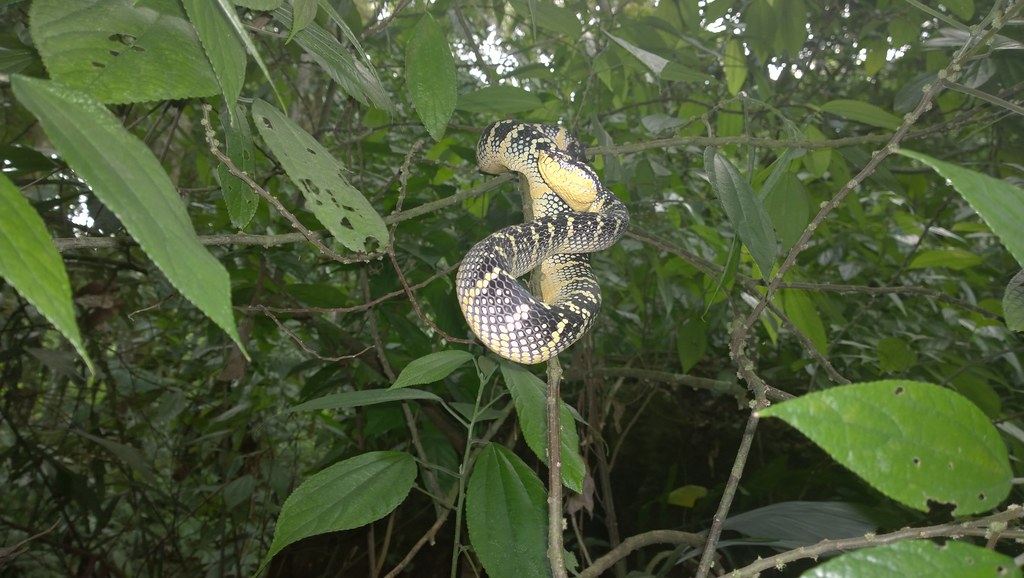Wagler's pit viper, Tropidolaemus wagleri, is a snake found in Malaysia, southern Thailand and Sumatra. They live in trees, and mostly feed on geckos, though females (which are larger) may also eat birds, frogs and rodents (squirrels, rats).
Locally in Bukit Lawang they are usually called 'ular bulan', or moon snake. This is because they do not move for long periods, feeding only around once a month, and then only after dark, striking out to attack passing prey (ambush hunting). There is no truth in the local folklore that, because the snakes appear not to move for long periods, they fed by birds!
Although they might appear to be very docile, their pits allow them to sense passing prey and strike out almost instantaneously. This means that you should not get within striking distance (they do not jump, but they can strike - consider a range of up to half-a-metre), particularly considering that the snakes are arboreal and may be at head height for a human. Bites of humans are common, and painful, but generally not serious (causing swelling and perhaps localised necrosis), although complications and death cannot be ruled out. Treatment protocol is available
here,. The Wagleri's viper produces several unique peptides, known as wagerlins, unrelated to other known proteins and toxins, which cause respiratory paralysis in small mammals such as mice. Some anti-ageing creams use synthetic Wagerlin-1, as a form of 'botox' intended to paralyse facial muscles, resulting in reduced wrinkles.
Female Wagler's pit vipers grow up to 1 metre long, but the males only grow to half-a-metre. Young snakes, as well as adult males, are plain green with small spots, as per the image below. Females, meanwhile, are green to greenish black, with yellow stripes. Females give birth to several dozen live young.

Mature female Wagler's pit viper, at Bukit Lawang.

Juvenile Wagler's pit viper, at Bukit Lawang. You can see the prehensile tail, adapted to grip trees.

Female Wagler's pit viper, at Bukit Lawang. Different colouring.